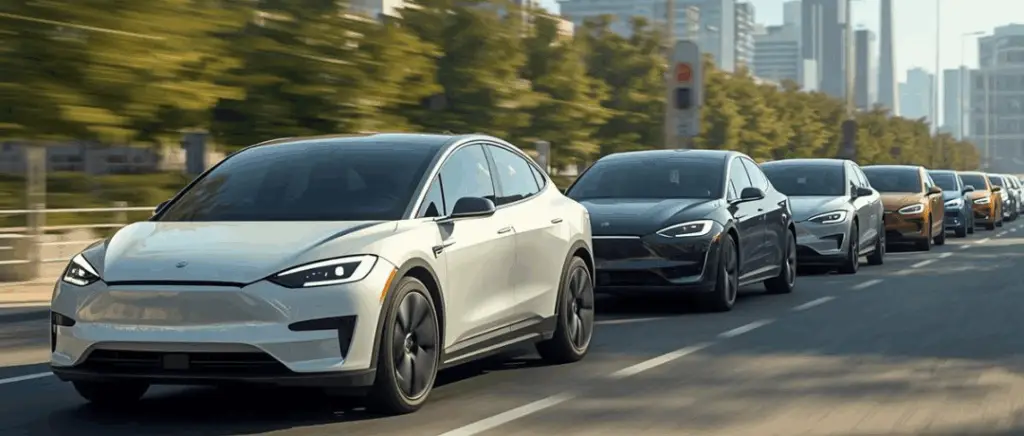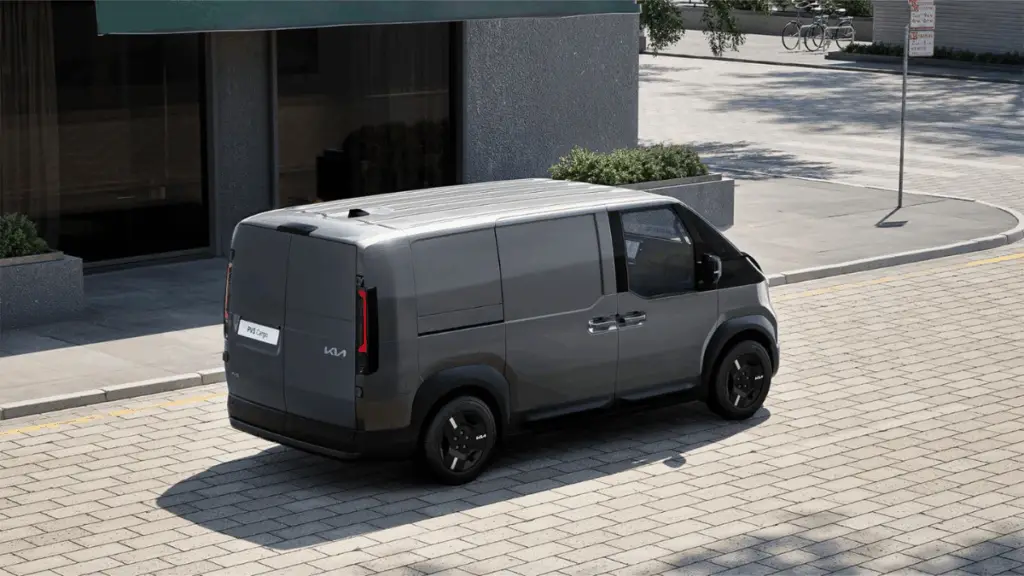Monday to Friday 9am - 12.30pm - 2pm - 7pm
What are low-emission zones?
The low-emission zones (ZFE) are urban zones that can only be entered by certain types of car, at certain times and sometimes on payment of a ticket. The possibility of entering low-emission zones depends on the type of vehicle: the lower the emissions, the more the driver can enter these zones and the cheaper the ticket.
What's more, certain types of more polluting cars are still banned from entering the EPZs. The objectives of EPZs are remarkable, as they aim to reduce air pollution in densely populated areas. Reducing fine-particle emissions, in particular, is a priority for most EU governments. Fine particles, nitrogen dioxide and ozone are the three main air pollutants of concern in Europe, and the ones that are most widely observed and recorded.
EPZs can also have other collateral benefits for the municipality. For example, historic town centres become more accessible and safer for pedestrians. But it should also be noted that the payment of the entrance fee, which is sometimes required, can also be a source of income for municipal coffers, which are often meagre.
What are the different types of zone?
The acronyms used for this type of zone can often be confusing, so we've compiled a short list of the main acronyms to help you find your way around.
There are 3 main types of low-emission zones :
- ZFEs (standard low-emission zones),
- ZCRs (restricted traffic zones),
- ZZEs (zero-emission zones)
In the EPZs (low-emission zone), high-emission vehicles are banned at all times. Signs indicate the boundaries of these zones. It is up to the municipalities to decide what types of vehicles are allowed in their EPZ. In France, for example, only vehicles with certain Crit'air certifications are generally allowed, but the criteria are defined by the individual municipalities.
ZFEs are considered to be the evolution of the former ZCRs (restricted traffic zones) which were active until the end of 2019 and which basically followed the same concepts. Finally, the term ZZE (zero-emission zone) is used for zones where only personal electric vehicles and carbon-free public transport are allowed, to the total exclusion of all other types of vehicle.
Until 31 December 2022Discover the range of electric vehicles available for delivery before Christmas!
How do restricted traffic zones work?
Restricted traffic zones have timetables and prohibitions that vary from city to city and are based on the normal movement of pedestrians and vehicles in the zones in question. It is essential to follow the instructions given on the vertical signs at the entrance to these restricted traffic zones faithfully, to avoid incurring penalties that can be quite high.
As mentioned, not all vehicles are allowed to enter and drive in a restricted zone. In addition to those resident in the restricted zone, public transport, emergency vehicles and cars with special transit permits (e.g. municipal police cars, armed forces cars, cars driven by disabled people, etc.) are permitted. Access for electric cars is regulated differently, depending on the region concerned. Special permits may be requested to allow temporary access to the city's existing limited emission zones, in derogation of existing bans, for proven and exceptional needs.
These permits are generally issued for vehicles used to carry out activities such as removals, extraordinary maintenance work on buildings, dwellings, shops and access routes to private homes, as well as to load and unload materials and furniture required for authorised events. In addition, special permits may be granted for medical examinations and examinations for people with serious walking problems.
Why are low-emission zones important?
Air pollution has a number of problematic consequences for people's health and life expectancy. According to the European Environment AgencyIn 2019, air pollution continued to cause a significant burden of premature death and disease in the 27 EU Member States. Again this year, 307,000 premature deaths were attributed to chronic exposure to fine particulate matter, with a further 40,400 early deaths attributed to chronic exposure to nitrogen dioxide and 16,800 premature deaths attributed to acute exposure to ozone.
The aim of the Zero Pollution" action plan is to reduce the number of early deaths due to exposure to fine particles by 55 % by 2030, compared with 2005. On the basis of theAEE of 456,000 premature deaths attributable to fine particles in 2005, this would be equivalent to reducing the number of early deaths in the EU by 250,800.
Compared with 2005. In 2019, these deaths attributed to exposure to fine particles fell by 33 % in the EU-27. If this rate of reduction is maintained in the future, the EU should achieve the objective of the "Zero Pollution" action plan on schedule.
The EPZs are an excellent solution to air pollution, but cities across the EU are also implementing other projects to meet the WHO's target of 5 µg/m3 for PM2.5 (fine particles are defined as particles with a diameter of 2.5 microns or less) on time. The switch to clean energy production methods, the priority given to rapid urban transport and walking and cycling networks in cities, as well as inter-urban rail freight, are just some of the urban planning and logistical changes we will see in European cities over the next few years. The most effective action we can take in this direction is to increase public passenger transport and switch to cleaner vehicles such as fully electric vehicles.
Which towns have low-emission zones in Europe?
As mentioned above, the low-emission zones are becoming increasingly popular throughout the European Union, due to their high potential for reducing air pollution.
We have listed some of the main cities that have decided to implement this method of reducing pollution.
La France
France currently has 11 low-emission zones These include Paris and the Greater Paris metropolitan area, Lyon, Toulouse, Nice, Aix-Marseille, Montpellier, Strasbourg, Grenoble, Rouen, Reims and Saint-Etienne. It should be noted that the 43 agglomerations with more than 150,000 inhabitants will have to have introduced a ZFE-m by 2025. To simplify the system for managing these zones, a sticker is placed on the vehicle to define which of the 6 categories the car belongs to. The categories are defined by the Crit'air certification and range from category Crit'air 0 (for zero engine emissions, where electric vehicles are included) to the Crit'Air 5 category, referring to vehicles with a high pollution coefficient. Old combustion engine vehicles, which are obviously a major source of air pollution because of their obsolete engine technology, are considered as "unclassified".
We have written a full article on Crit'Air certificationby going into more detail on the subject and explaining how to obtain the right vignette.
Belgium
The low-emission zones in Belgium, known locally as 'low emission zones', are only accessible to certain vehicles with low or zero emissions. LEZs can be found in the cities of Brussels, Antwerp and recently Ghent, and both municipalities require vehicles to register online. In particular, the Brussels municipality only allows the circulation of diesel vehicles registered after January 2006 (i.e. from the Euro 3 standard).
The Netherlands
In the Netherlands, traffic and air pollution are very important and much debated issues. That's why the use of electric cars is being strongly encouraged through the Netherlands' eco-districts, which have been designed and created to improve the environmental impact of certain areas through more sustainable ways of creating energy, transporting people, providing food and managing waste.
Milieuzones is the name given to the EPZs in the country, and currently Amsterdam, Arnhem, Den Haag (from July 2020), Rotterdam and Utrecht have implemented them, defining zones where certain types of vehicle are completely banned. In concrete terms, in Utrecht and Rotterdam, diesel cars manufactured before 2001 cannot be driven.
Italy
In Italy, the low-emission zones are known as 'Zona a traffico limitato' (ZTL) and are widespread throughout the country. In fact, over a hundred Italian municipalities have adopted this type of solution, but unlike other EU countries, in Italy ZTLs are used to regulate traffic, but not always on the basis of environmental criteria. While the reduction of traffic and pollution is considered the main feature of this urban planning solution, other important elements taken into account are the preservation of local cultural or natural areas or the limitation of excessive access by tourist vehicles. The organisation and management of the LPZ is not standardised throughout the country, so towns may have different rules, depending on the needs and nature of the implementation of the limited emission zone.
Some of the cities that have adopted the ZTL are Milan, Turin, Rome, Naples, Florence and Bari.
Spain
Madrid has set up a low-emission zone called "Madrid Central". This is a designated low-pollution zone, with restricted traffic rules, which came into force at the end of 2018. Following the European Union directive, this measure aims to improve air quality and give priority to pedestrians, bicycles and public transport, which play an important role. Diesel vehicles with Euro 4 or Euro 5 certification can enter this zone (albeit with a 2-hour maximum parking time). Electric vehicles, meanwhile, have no restrictions on entering this zone.
Since 2020, Barcelona has also designated a zone where pre-Euro 2 gas vehicles and pre-Euro 4 diesel vehicles are banned on weekdays from 7am to 8pm. And almost 138 Spanish cities will be joining the movement in the next few years: this is due to a specific Spanish law which was introduced, obliging all towns with more than 50,000 inhabitants to implement their own zones.
Germany
Germany is a very environmentally-friendly country, with a strong focus on sustainability and environmental issues. In fact, the country has been a pioneer of low-emission zones (ZFE) (known locally as "Umweltzone"). Hundreds of German towns and cities use a system of differentiated traffic, where only diesel vehicles registered after 2006, ordinary petrol vehicles registered after 1993 and, of course, electric vehicles can circulate. They use a certification system based on a sticker available from accredited retailers, authorising traffic in these zones without receiving a fine. More drastic restrictions have been introduced in some cities, such as Hamburg, Stuttgart and Berlin.
Portugal
In Lisbon, during the day, only certain types of vehicle are allowed to circulate, with different requirements in two distinct zones: the first zone is the historic centre, only accessible to cars registered after 2000, while the second zone is made up of outlying districts accessible to those registered after 1997. In this case too, electric vehicles are allowed to enter and park in the low-emission zone and a sticker is required to certify the zero-emission characteristic and simplify the system of fines.
The United Kingdom
In spring 2019, London inaugurated an even more restrictive EPZ: the so-called Ultra Low Emission Zone (ULEZ). In this zone, petrol vehicles registered before 2006 are banned, as are diesel vehicles manufactured before 2015. If an unauthorised vehicle breaches the zone, the fines are very heavy. A daily fee of around €15 can be paid for access to the zone, which discourages the use of highly polluting vehicles.
Why can electric vehicles drive in low-emission zones?
The reasons why electric vehicles have free access to EPZs are fundamentally linked to the very nature of these urban areas.
We can see that low-emission zones exist for 4 main reasons:
- reduce air pollution and hazardous emissions in general,
- reduce noise pollution in densely populated areas,
- reduce traffic in the city centre,
- increase the municipal revenue stream.
Some of the latter two, mainly linked to the economic and urban planning aspects of this solution, we can see that the first two reasons do not affect the electric carsCO2 emissions for fully electric vehicles are 0g/km, as are all the other dangerous fine particles. At the same time, electric motors are considerably quieter than internal combustion vehicles, considerably reducing noise pollution, while enabling flexible and efficient mobility in city centres.
In addition, this type of favourable approach by the European authorities towards electric cars makes these new-generation vehicles even more attractive to private customers, helping to accelerate the electrification of European fleets
In a nutshell
The introduction of low-emission zones across Europe is part of a wider, more innovative plan. By gradually banning high-emission vehicles from Europe's city centres, the authorities are encouraging their citizens to consider new modes of transport as the best way to protect the environment. Visit electric carsIn particular, there is unanimous agreement that their different technological structure enables them to avoid all types of greenhouse gas emissions and other exhaust fumes, making them the best solution for driving better, greener cars without being subject to any limits imposed by the EPZs.
































